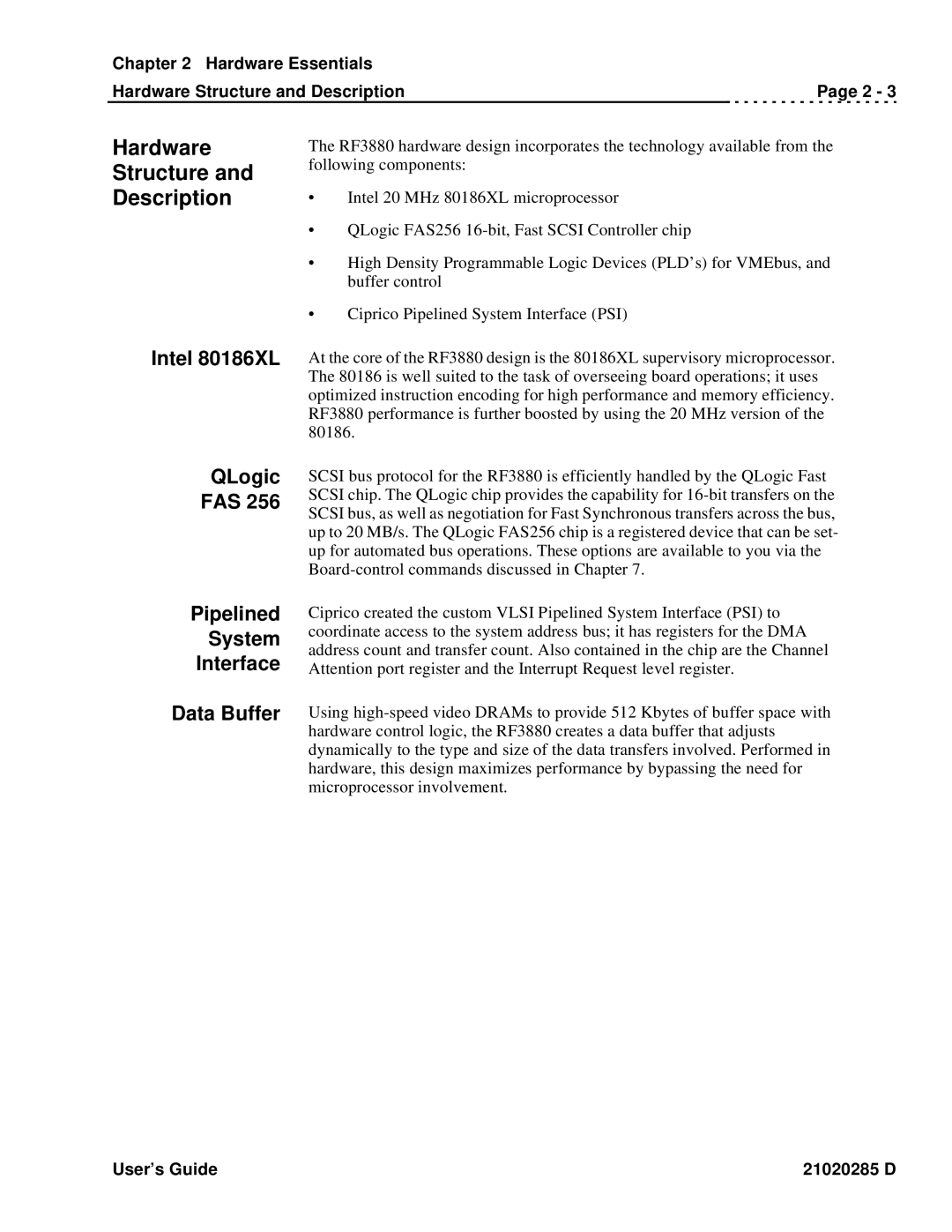Chapter 2 Hardware Essentials
Hardware Structure and Description | Page 2 - 3 |
Hardware
Structure and
Description
The RF3880 hardware design incorporates the technology available from the following components:
•Intel 20 MHz 80186XL microprocessor
•QLogic FAS256
•High Density Programmable Logic Devices (PLD’s) for VMEbus, and buffer control
•Ciprico Pipelined System Inter face (PSI)
Intel 80186XL | At the core of the RF3880 design is the 80186XL supervisory microprocessor. |
| The 80186 is well suited to the task of overseeing board operations; it uses |
| optimized instruction encoding for high performance and memory efficiency. |
| RF3880 performance is further boosted by using the 20 MHz version of the |
| 80186. |
QLogic FAS 256
SCSI bus protocol for the RF3880 is efficiently handled by the QLogic Fast SCSI chip. The QLogic chip provides the capability for
Pipelined
System
Interface
Data Buffer
Ciprico created the custom VLSI Pipelined System Interface (PSI) to coordinate access to the system address bus; it has registers for the DMA address count and transfer count. Also contained in the chip are the Channel Attention port register and the Interrupt Request level register.
Using
User’s Guide | 21020285 D |
